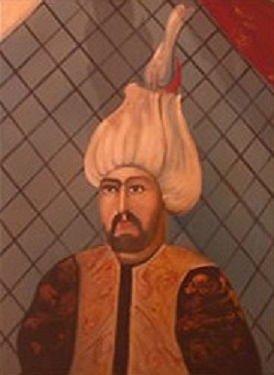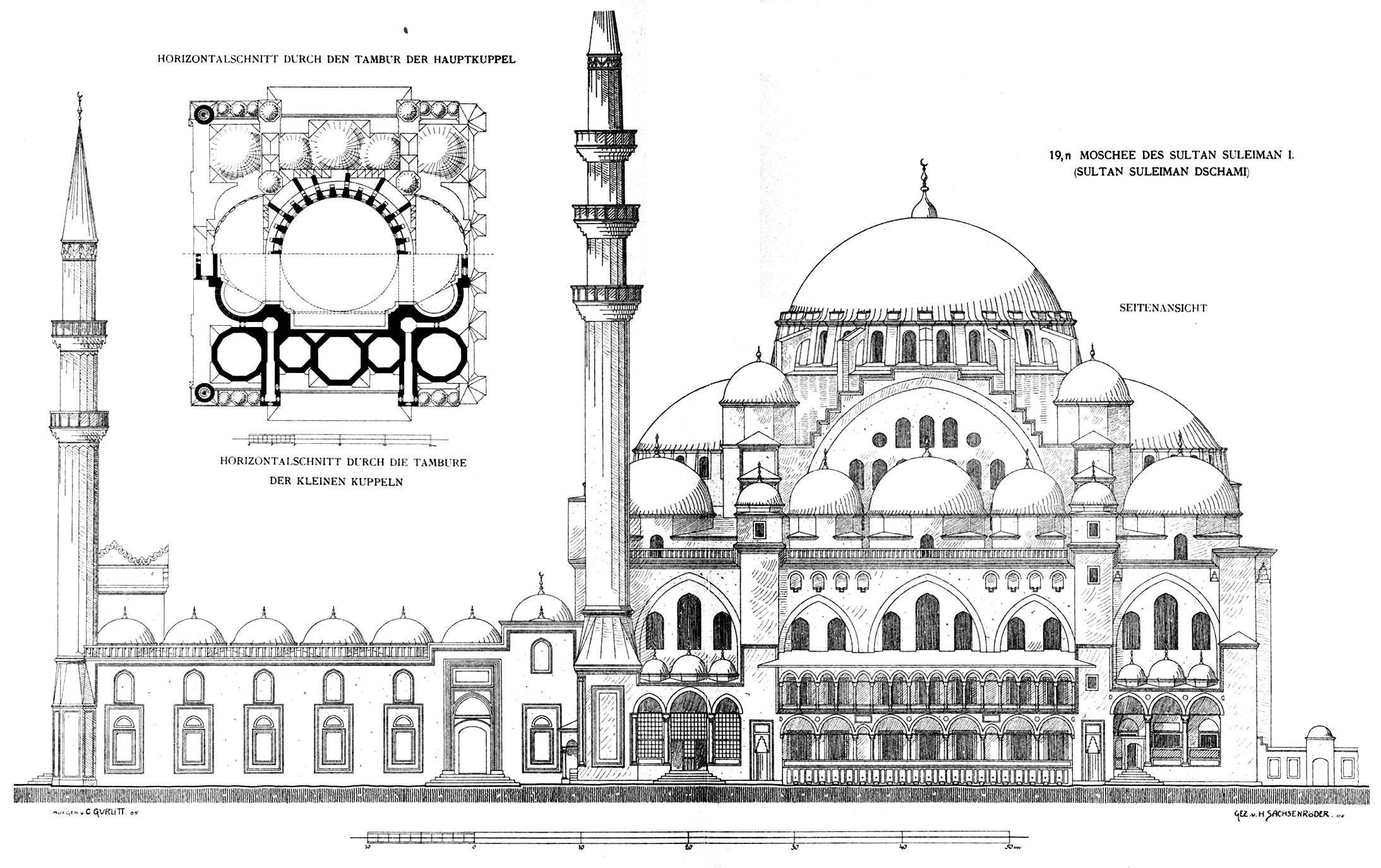|
Nakkaş Osman
Nakkaş Osman (sometimes called Osman the Miniaturist) was the chief miniaturist for the Ottoman Empire during the later half of the sixteenth century. The dates of his birth and death are poorly known, but most of his works are dated to the last quarter of the sixteenth century. The oldest known illustrations of Nakkaş Osman's were made between 1560 and 1570 for a Turkish translation of the epic Persian poem '' Shahnama'' by Ferdowsi. He is known to have been the chief illustrator of the various official histories written by Seyyid Lokman for Murad III that were produced in this era, including the '' Zafername'' (''Book of Victories''), the '' Şahname-ı Selim Han'' (''Book of Kings of Selim Khan''). and the '' Şehinşahname'' (''Book of King of Kings''). In 1582 he worked on the astrological '' Book of Felicity'', and around 1585 he was one of the illustrators of the ''Siyer-i Nebi'', an epic on the life of Muhammad written around 1388. Style Osman's illustrative style h ... [...More Info...] [...Related Items...] OR: [Wikipedia] [Google] [Baidu] |
Ottoman Miniature
Ottoman miniature ( tr, Osmanlı minyatürü) or Turkish miniature was a Turkish art form in the Ottoman Empire, which can be linked to the Persian miniature tradition, as well as strong Chinese artistic influences. It was a part of the Ottoman book arts, together with illumination (), calligraphy (), marbling paper (), and bookbinding (). The words or were used to define the art of miniature painting in Ottoman Turkish. The studios the artists worked in were called Nakkashanes. Original procedure The miniatures were usually not signed, perhaps because of the rejection of individualism, but also because the works were not created entirely by one person; the head painter designed the composition of the scene, and his apprentices drew the contours (which were called ) with black or colored ink and then painted the miniature without making an illusion of third dimension. The head painter, and much more often the scribe of the text, were indeed named and depicted in some of the ma ... [...More Info...] [...Related Items...] OR: [Wikipedia] [Google] [Baidu] |
Sokollu Mehmed Pasha
Sokollu Mehmed Pasha ( ota, صوقوللى محمد پاشا, Ṣoḳollu Meḥmed Pașa, tr, Sokollu Mehmet Paşa; ; ; 1506 – 11 October 1579) was an Ottoman statesman most notable for being the Grand Vizier of the Ottoman Empire. Born in Ottoman Herzegovina into an Orthodox Christian Serbian family, Mehmed was abducted at an early age as part of the Ottoman devşirme system of forcibly recruiting Christian boys to be raised to serve as a janissary. He rose through the ranks of the Ottoman imperial system, eventually holding positions as commander of the imperial guard (1543–1546), High Admiral of the Fleet (1546–1551), Governor-General of Rumelia (1551–1555), Third Vizier (1555–1561), Second Vizier (1561–1565), and as Grand Vizier (1565–1579, for a total of 14 years, three months, 17 days) under three sultans: Suleiman the Magnificent, Selim II, and Murad III.Imamović, Mustafa (1996). Historija Bošnjaka. Sarajevo: BZK Preporod. He was assassinated in 1579, ... [...More Info...] [...Related Items...] OR: [Wikipedia] [Google] [Baidu] |
Hejaz
The Hejaz (, also ; ar, ٱلْحِجَاز, al-Ḥijāz, lit=the Barrier, ) is a region in the west of Saudi Arabia. It includes the cities of Mecca, Medina, Jeddah, Tabuk, Yanbu, Taif, and Baljurashi. It is also known as the "Western Province" in Saudi Arabia.Mackey, p. 101. "The Western Province, or the Hejaz .. It is bordered in the west by the Red Sea, in the north by Jordan, in the east by the Najd, and in the south by the 'Asir Region. Its largest city is Jeddah (the second largest city in Saudi Arabia), with Mecca and Medina being the fourth and fifth largest cities respectively in the country. The Hejaz is the most cosmopolitan region in the Arabian Peninsula. The Hejaz is significant for being the location of the Islamic holy cities of Mecca and Medina, the first and second holiest sites in Islam, respectively. As the site of the two holiest sites in Islam, the Hejaz has significance in the Arab and Islamic historical and political landscape. The region of Hejaz is ... [...More Info...] [...Related Items...] OR: [Wikipedia] [Google] [Baidu] |
Bedouin
The Bedouin, Beduin, or Bedu (; , singular ) are nomadic Arab tribes who have historically inhabited the desert regions in the Arabian Peninsula, North Africa, the Levant, and Mesopotamia. The Bedouin originated in the Syrian Desert and Arabian Desert but spread across the rest of the Arab world in West Asia and North Africa after the spread of Islam. The English word ''bedouin'' comes from the Arabic ''badawī'', which means "desert dweller", and is traditionally contrasted with ''ḥāḍir'', the term for sedentary people. Bedouin territory stretches from the vast deserts of North Africa to the rocky sands of the Middle East. They are traditionally divided into tribes, or clans (known in Arabic as ''ʿašāʾir''; or ''qabāʾil'' ), and historically share a common culture of herding camels and goats. The vast majority of Bedouins adhere to Islam, although there are some fewer numbers of Christian Bedouins present in the Fertile Crescent. Bedouins have been referred ... [...More Info...] [...Related Items...] OR: [Wikipedia] [Google] [Baidu] |
Tahmasp I
Tahmasp I ( fa, طهماسب, translit=Ṭahmāsb or ; 22 February 1514 – 14 May 1576) was the second shah of Safavid Iran from 1524 to 1576. He was the eldest son of Ismail I and his principal consort, Tajlu Khanum. Ascending the throne after the death of his father on 23 May 1524, the first years of Tahmasp's reign were marked by civil wars between the Qizilbash leaders until 1532, when he asserted his authority and began an absolute monarchy. He soon faced a long-lasting war with the Ottoman Empire, which was divided into three phases. The Ottoman sultan, Suleiman the Magnificent, tried to install his own candidates on the Safavid throne. The war ended with the Peace of Amasya in 1555, with the Ottomans gaining sovereignty over Iraq, much of Kurdistan, and western Georgia. Tahmasp also had conflicts with the Uzbeks of Bukhara over Khorasan, with them repeatedly raiding Herat. In 1528, at the age of fourteen, he defeated the Uzbeks in the Battle of Jam by using artillery, unkno ... [...More Info...] [...Related Items...] OR: [Wikipedia] [Google] [Baidu] |
Safavid
Safavid Iran or Safavid Persia (), also referred to as the Safavid Empire, '. was one of the greatest Iranian empires after the 7th-century Muslim conquest of Persia, which was ruled from 1501 to 1736 by the Safavid dynasty. It is often considered the beginning of History of Iran, modern Iranian history, as well as one of the gunpowder empires. The Safavid List of monarchs of Persia, Shāh Ismail I, Ismā'īl I established the Twelver denomination of Shia Islam, Shīʿa Islam as the Safavid conversion of Iran to Shia Islam, official religion of the empire, marking one of the most important turning points in the history of Islam. An Iranian dynasty rooted in the Sufi Safavid order founded by Kurdish people, Kurdish sheikhs, it heavily intermarried with Turkoman (ethnonym), Turkoman, Georgians, Georgian, Circassians, Circassian, and Pontic Greeks, Pontic GreekAnthony Bryer. "Greeks and Türkmens: The Pontic Exception", ''Dumbarton Oaks Papers, Vol. 29'' (1975), Appendix II "Geneal ... [...More Info...] [...Related Items...] OR: [Wikipedia] [Google] [Baidu] |
Suleiman The Magnificent
Suleiman I ( ota, سليمان اول, Süleyman-ı Evvel; tr, I. Süleyman; 6 November 14946 September 1566), commonly known as Suleiman the Magnificent in the West and Suleiman the Lawgiver ( ota, قانونى سلطان سليمان, Ḳānūnī Sulṭān Süleymān) in his realm, was the tenth and longest-reigning Sultan of the Ottoman Empire from 1520 until his death in 1566. Under his administration, the Ottoman Empire ruled over at least 25 million people. Suleiman succeeded his father, Selim I, as sultan on 30 September 1520 and began his reign with campaigns against the Christian powers in central Europe and the Mediterranean. Belgrade fell to him in 1521 and the island of Rhodes in 1522–23. At Mohács, in August 1526, Suleiman broke the military strength of Hungary. Suleiman became a prominent monarch of 16th-century Europe, presiding over the apex of the Ottoman Empire's economic, military and political power. Suleiman personally led Ottoman armies in ... [...More Info...] [...Related Items...] OR: [Wikipedia] [Google] [Baidu] |
Süleymaniye Mosque
The Süleymaniye Mosque ( tr, Süleymaniye Camii, ) is an Ottoman imperial mosque located on the Third Hill of Istanbul, Turkey. The mosque was commissioned by Suleiman the Magnificent and designed by the imperial architect Mimar Sinan. An inscription specifies the foundation date as 1550 and the inauguration date as 1557. Behind the ''qibla'' wall of the mosque is an enclosure containing the separate octagonal mausoleums of Suleiman the Magnificent and his wife Hurrem Sultan (Roxelana). For 462 years, the Süleymaniye Mosque was the largest mosque in the city, until it was surpassed by the Çamlıca Mosque in 2019. The Süleymaniye Mosque is one of the best-known sights of Istanbul, and from its location on the Third Hill, it commands an extensive view of the city around the Golden Horn. History Sultan Suleyman the Magnificent chose the architect Mimar Sinan to create a mosque in memory of his son Şehzade (Crown Prince) Mehmed. Suleyman was so impressed with the ensuing Şeh ... [...More Info...] [...Related Items...] OR: [Wikipedia] [Google] [Baidu] |
Nadr Ibn Al-Harith
Al-Naḍr ibn al-Ḥārith ibn ʿAlqama ibn Kalada ibn ʿAbd Manāf ibn Abd al-Dār ibn Quṣayy () (d. 624 CE) was an Arab pagan physician who lived in the same time and region as the Islamic prophet Muhammad. He was captured after the Battle of Badr and was executed for criticising and ridiculing Quran and Muhammad. Muhammad commanded to cut his (Al-Nadr's) head before him and that was done as Ali beheaded him in front of Muhammad and his companions. It is known that he was a critic of Islam and Muhammad. Surah At-Taubah 61 was sent down after he attacked the prophet Muhammad. After the battle, Muhammad decided to return to Medina. While Muhammad was returning to Medina, he received a revelation regarding the distribution of war booty. This per ''tafsir'' was the Quran verse Quran 8:41. According to the authentic Books of history of Islam, two captives – Nadr bin Harith and ‘Uqbah ibn Abū Mu‘ayṭ were beheaded by Ali. The event is claimed to have inspired Nadr's relat ... [...More Info...] [...Related Items...] OR: [Wikipedia] [Google] [Baidu] |
.jpg)

.jpg)



